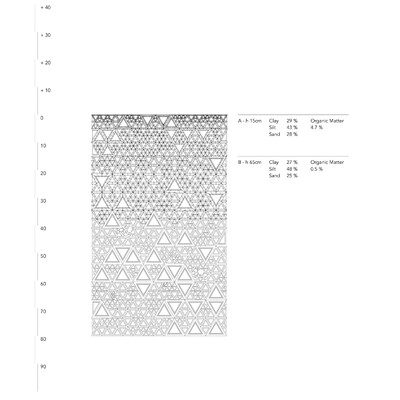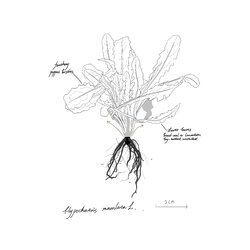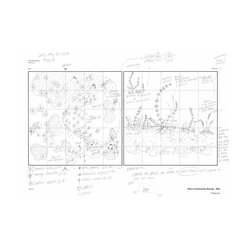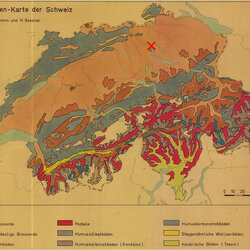
Soil Sampling
To learn more about the soils in the garden, we used our soil sampling method as described in the "Fieldwork Manual: Soil Sampling". We first decided on a transect through the garden that covered different soil conditions based on our findings from last year. Along this transect, we dug a soil profile with a soil auger approximately every five meters. At each location, we conducted several field tests, e.g. on soil color, pH and texture of the different soil horizons. We also sent one soil sample per sampling point to the laboratory to check our results from the field tests and carry out further tests such as nutrient analyses.
The soil samples showed a wide variety of soil conditions - from deep to shallow and from compacted to loose. However, the results also showed similarities, e.g. in terms of soil texture and pH value. All the soils in the garden have a loamy or clay-loam texture and a neutral to slightly alkaline pH value between 7.8 and 8.7.
- Profile 1: The profile at the bottom of the garden shows a fairly deep soil (60 cm) with two horizons with a high content of organic matter (oxidizable organic matter = 4 - 5.5 %). As the subsoil has a balanced nutrient content, the topsoil has a low nitrate value. Both horizons have a loamy texture.
- Profile 2: This profile shows a very shallow soil, with a very compacted soil layer and small stones only after 10 cm. For this reason, it was not possible to drill deeper than approx. 15 cm. It has a high organic matter content (oxidizable organic matter = 7.41 %), low nutrients and a clayey texture.
- Profile 3: This profile shows a total soil depth of 40 cm with two horizons. The topsoil has an alkaline pH value of 8.48 and a loamy texture. The subsoil has a rather neutral pH value and a very low organic matter content (oxidizable organic matter = 0.62 %). It has a loamy-clayey texture.
- Profile 4: At more than 80 cm, this profile is one of the deepest soils in the garden. The topsoil contains more organic matter (4.5 %) than the subsoil (0.5 %). The deeper the soil, the lower the pH value (10 cm = 7.9, 70 cm = 8.5). The soil texture of both horizons is loamy-clayey. Both horizons also have a low nitrate content.
- Profile 5: The profile at the top of the garden is also 80 cm deep and shows two different horizons. The topsoil is loamy-clayey with a fairly high organic matter content (3.4 %). The subsoil is loamy and contains almost no organic matter.
Based on the field and the laboratory tests, two students have drawn the soil profiles using the parametric soil language of the Chair of Being Alive in Rhino and in Grasshopper. As a result, we obtain standardized and comparable representations of the soil. Starting from the five soil profiles, we were able to draw a transect through the entire garden from top to bottom.
We are not soil scientists and do not have extensive experience with soil sampling. The field tests are carried out by students in the garden. We therefore compared the results of the soil texture determined by the hand method with those of the laboratory tests. The feel method showed a greater variety in soil texture, while the results of the laboratory analysis showed a very similar texture in all soils in the garden.










